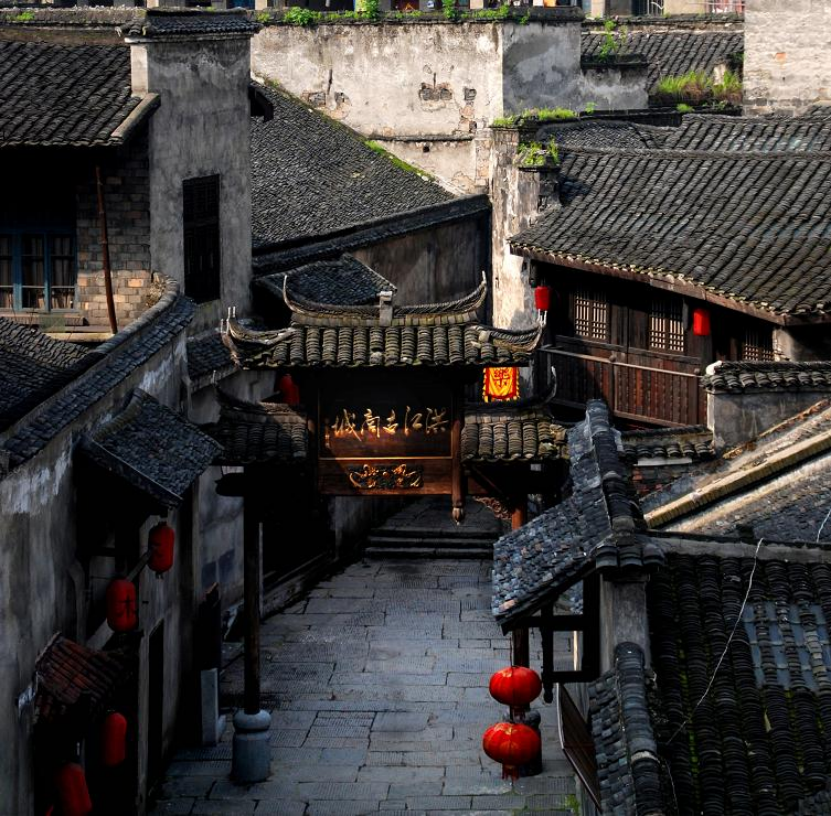
The Gate of Hongjiang Ancient Commercial Town
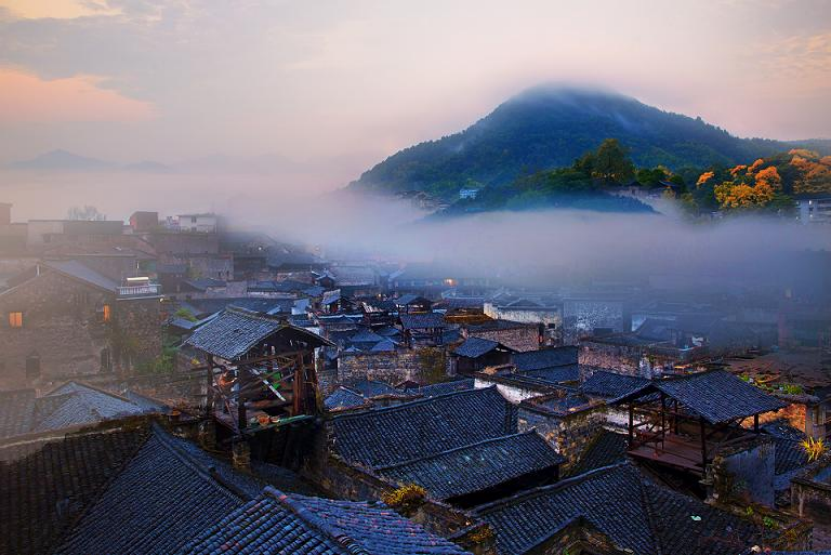
Hongjiang Ancient Commercial Town in Sunrise
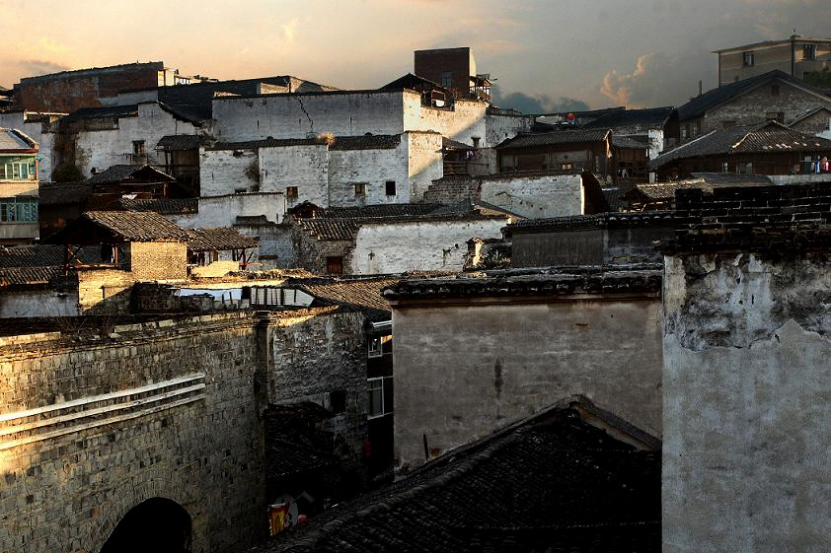
Hongjiang Ancient Commercial Town in Sunset
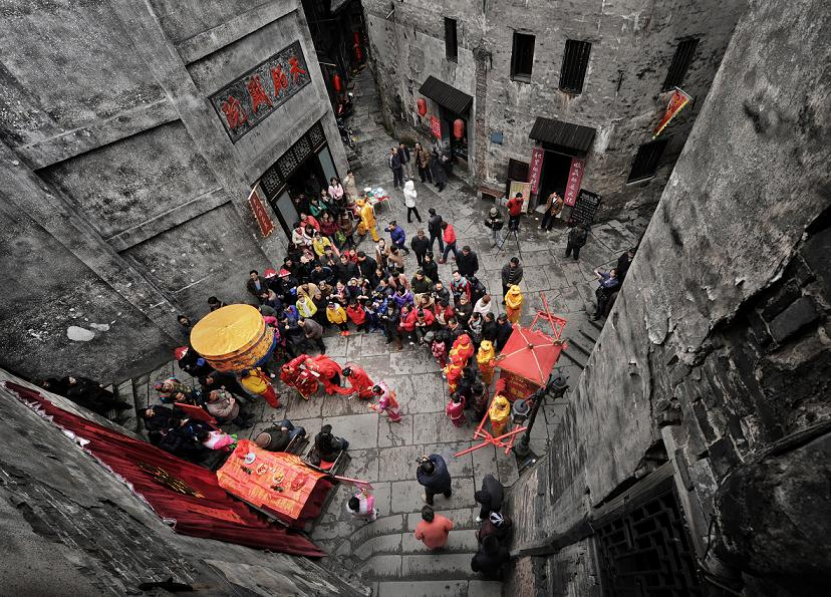
Hongjiang Ancient Commercial Town is located at the confluence of the Yuanshui and Wushui rivers with its back against Mount Songyun, a famous Buddhist mountain in western Hunan. Lying at the foot of a mountain with lush peaks and beside a river winding through its center, this town enjoys a panoramic view resembling a giant Tai Chi map made of natural hills and a big river. It originated in the Spring and Autumn Period (BC770-BC476) and Warring States Period (BC475-BC221), formed in the Tang Dynasty (618-907), and flourished in the late Ming and early Qing Dynasties (1600-1700). With convenient water transportation, it used to be a leading cargo handling hub across the border areas of Yunnan, Guizhou, Guangxi, Hunan, and Sichuan provinces, and the largest, earliest and most comprehensive commercial town and financial center in Southwest China, famous for trading timber, tung oil, and local medicine, etc. In its heyday, there were numerous shops on the streets and cargo vessels on the river with merchants from all parts of the country. Its currency throughput was second only to that of Changsha, the capital city of Hunan province, and its annual export volume of local tung oil once exceeded that of silk, the largest export product of China at that time. As a result, it was famed as “A Little Nanjing”, “A Pearl of Western Hunan” and “The Thoroughfare to Five Provinces”.
In spite of the vicissitudes of time, more than 380 old buildings constructed in the Ming and Qing dynasties and the period of the Republic of China are still well preserved now in Hongjiang Ancient Commercial Town, including commercial firms, private banks, brothels, opium dens, restaurants, workshops, temples, newspaper agencies, inns, theatrical stages, and schools, etc., covering a total area of around 300 thousand square meters, which is like a vivid picture of “Scroll of Pure Brightness Festival on the River” that showcases the social and commercial panorama of the Ming and Qing dynasties and the period of the Republic of China, as well as a living museum that integrates political, economic, military, religious, and cultural historical resources. It’s rare of its kind in China for its large scale, magnificent grandeur, profound connotation and good preservation, so it is known as “A Top Ancient Commercial Town in China”, “A Living Fossil of China's Budding Capitalism”, “A Textbook of China’s Market Economy”. It was once praised by the Expert Group of China Tourism Forum as follows: “You cannot understand the beauty of ancient Chinese architecture without visiting Beijing; neither can you understand the essence of Chinese history and culture without visiting Xi’an; and nor can you deeply feel the brilliance and glory of ancient Chinese commercial civilization without visiting Hongjiang.”
The main tourist attractions of Hongjiang Ancient Commercial Town include Fuquantang Pharmacy, Suzhou Guild Hall, Xu Fulong Trading Company, Residence of Pan Family, Tianjun Theater, Xunba General Administration, Hongjiang Newspaper Agency, Zhongyi Escort Agency, Shengfeng Bank, Lijin Revenue Collecting Bureau, Fuxingchang Opium Den, Shaoxing Brothel, and Hefeng Apartment for Prostitutes, etc. Now, there are performances in each site of these places to recreate the original scenes of the ancient town.
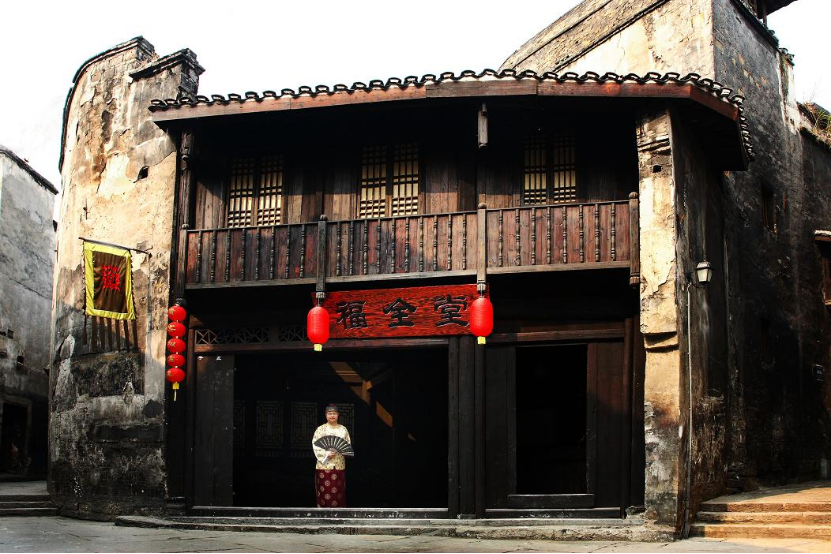

Fuquantang Pharmacy
Fuquantang Pharmacy was founded in the 11th year of the Reign of Emperor Tongzhi of the Qing Dynasty (1872) by Hu Shanren, a businessman from Jiangsu province.
Fuquantang, one of the largest pharmacies in Hongjiang Ancient Commercial Town, followed an operation principle of “selling medicine at retail mainly and at wholesale partially, with the storefront being a shop and backyard a workshop of medicine made by themselves.”
Since its establishment, Fuquantang Pharmacy always enjoyed booming business because the boss Mr. Hu was clever and capable. He was not only knowledgeable in medicine, but also skilled in selecting medicinal materials and expert at making medicine. He had refined prescriptions and could made over one hundred types of traditional Chinese medicine, such as decoction pieces, pills, ointments, and eye medicine, etc., which were in great demand near and far.
In addition, Mr. Hu knew how to promote marketing and was good at advertising. He posted advertisements across the town, displayed precious medicines such as pilose antler, ginseng, tremella, and bird’s nest in his shop windows all year round, and attracted the attention of tourists and customers by breeding leopards and slaughtering live donkeys to make paste and to show the authenticity of the medicines.
What’s more, Mr. Hu was good at management. He never hesitated to award or punish his employees when they deserved and he provided good welfare to them. He picked up the tab on accommodation, meals, medical treatment, and medication for all his employees and their family members. When having a business trip to escort or purchase medicinal materials, an employee was allowed to buy some goods in a small amount with the funds of the store and to trade it for his own benefit; namely, the employer could keep the net profit of trading the small amount of goods, which was called “public welfare funds”, and only needed to return the related principal to the store. Furthermore, Mr. Hu would offer more substantial year-end bonus to his employees.
Mr. Hu kept a very flexible business model instead of sticking to a stereotyped routine, which attracted small-scale pharmacies and merchants in surrounding rural towns to cooperate with him and to establish interdependent relationships with him. As a result, his branch shops for wholesale were scattered across the neighbouring regions, some of which even had business with foreign countries.
Some of Mr. Hu’s descendants take over his family business and are all willing to do good and were enthusiastic about public welfare, making great contributions to the national medicine industry. After the founding of the People’s Republic of China in 1949, Fuquantang Pharmacy was jointly operated by government and private individuals and relocated to Xinmin Road of Hongjiang.

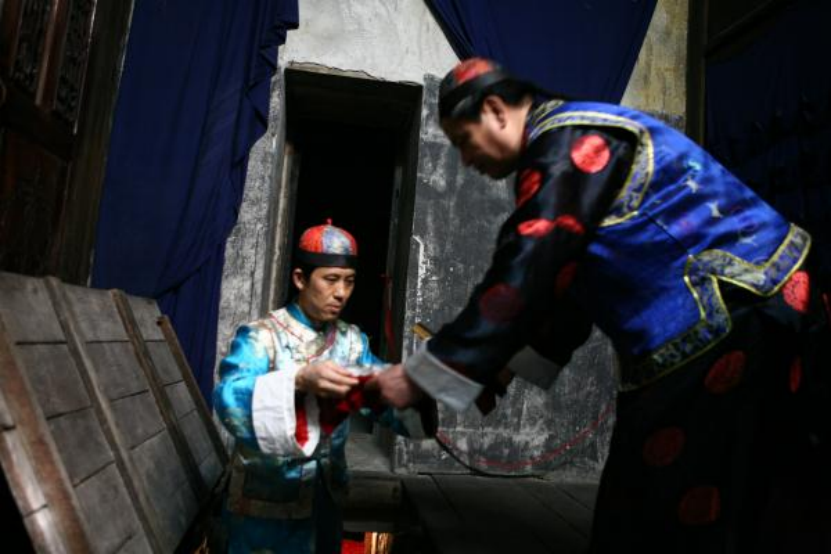
Shengfeng Bank
Shengfeng Bank, founded in the 5th year of the Reign of Emperor Xianfeng of the Qing Dynasty (1855) , was one of the largest of the 23 banks in Hongjiang. It enjoyed unique characteristics, with four large ingots on the signboard, meaning “being full of gold and silver”; and four big characters “Wu Hang Da Bu” below the ancient copper coins, symbolizing “having strong financial strength”. In addition, the sign on the gate was also made with unique craftsmanship, with a big character “Feng” on it, resembling an iron abacus cast from a string of copper coins.

Private banks were old-fashioned financial institutions with a long history, which played a significant role in promoting the development of the commodity economy in old China, so did Shengfeng Bank, which also played a positive role in the development of commercial logistics, finance and trade in Hongjiang at that time. Shengfeng Bank was composed of a chief shopkeeper’s office (assuming overall responsibility for the internal and external affairs of the bank), a deputy shopkeeper’s office (assisting the chief shopkeeper in handling internal and operational affairs), an accounting room (handling incoming and expending settlements and assuming overall responsibility for general commercial accounts), a letter room (handling letters and papers), a business invitation office (attracting deposits and making loans), a cash keeping room (receiving and keeping cash), an exchanging office (responsible for foreign exchange and buying and selling cash), and a reception room, etc.
The bank notes issued by Shengfeng Bank could be exchanged for silver not only at its branch offices in Hankou, Guiyang, Zhenjiang, etc., but also at banks with the character “Kang” nationwide. At that time, banks in China were respectively named with the characters of “Heng”, “Guo”, “Kang”, and “Yuan”, just like the Industrial, Commercial, Construction, and Agricultural Banks of China today.
Suzhou Guild Hall
Suzhou Guild Hal, founded in the 17th year of the Reign of Emperor Chongzhen of the Ming Dynasty (1644), was a commercial guild hall funded and built by Suzhou merchants from five prefectures (Suzhou, Huizhou, Chizhou, Huzhou, and Ningguo) of Jiangsu and Zhejiang provinces at that time. It was mainly used for gatherings and entertainment of the fellow townsmen to relieve their homesickness, and it also sold general merchandise such as cloth and silk.
Xu Fulong Trading Company

Xu Fulong Trading Company was founded in the 12th year of the Reign of Emperor Tongzhi of the Qing Dynasty (1873) by two brothers, Xu Zuochen and Xu Dachen, who mainly engaged in trading tung oil and other local specialty products. There is a unique square stone “warning pillar” on either side of gate of the company, fully embodying the business principles of Hongjiang merchants, which are “adhering to principles and being honest and upright.”

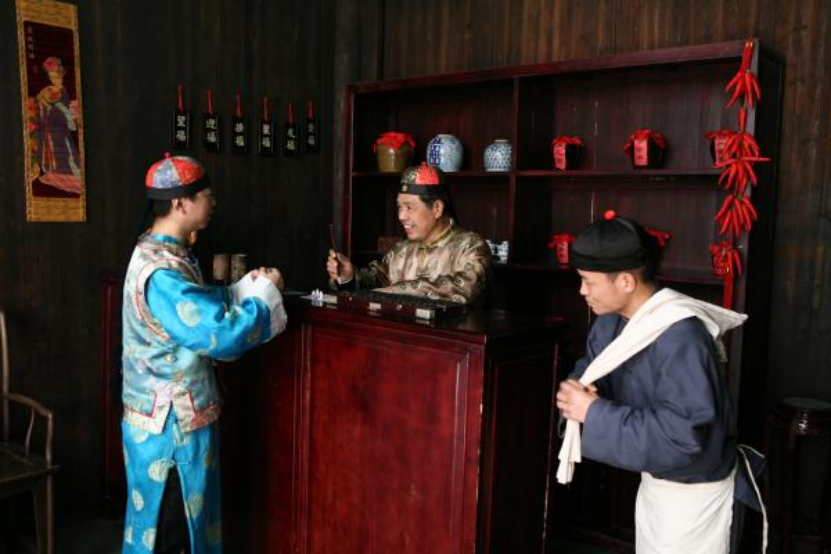
Residence of Pan Family
Residence of Pan Family refers to the former residence of Pan Rongting, a famous merchant and a renowned philanthropist, who made many contributions to the philanthropic undertaking of Hongjiang throughout his life. There are two treasures in the house: one is a large jar exquisitely carved with fishes and a dragon and the other is the character of “Fu” on the courtyard wall, symbolizing prosperity and unity of the country, which was presented to Emperor Kangxi at that time.

Tianjun Theater
Tianjun Theater, located in Yuying Lane of Hongjiang Ancient Commercial Town, was mainly for dramas and silent films. The Beijing Opera Troupe here was well known far and wide with famous actors and actresses such as Chen Junlun and Yun Lixia, who were renowned in Hunan province. Duan Xiuqin, a famous theatrical actress nationwide, performed here during the War of Resistance Against Japanese Aggression (1931-1945).
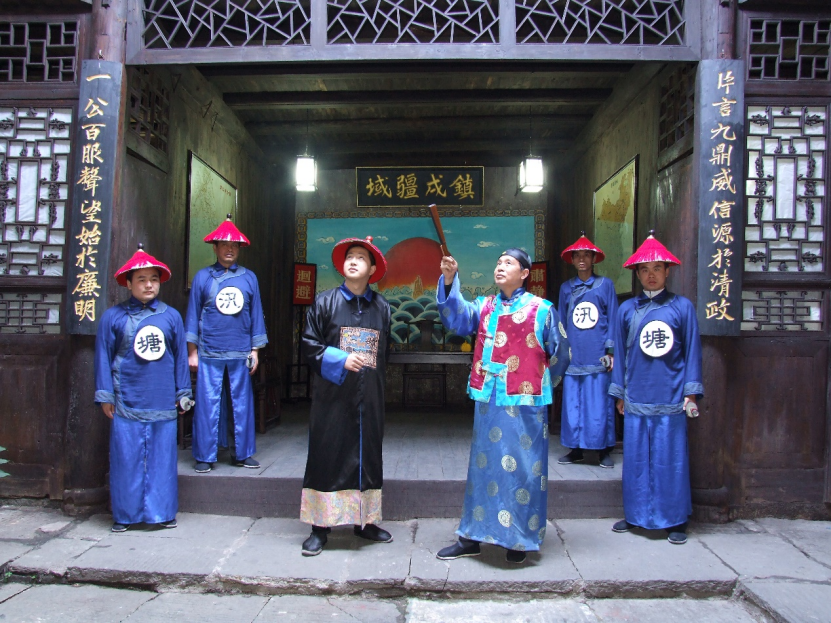
Xunba General Administration
Xunba General Administration was established in the 6th year of the Reign of Emperor Yongzheng of the Qing Dynasty (1728). It was a military organization that guarded the security of the Hongjiang River. There are still six warning sayings about being an upright official and an honest person left over 280 years ago in the house, which can still inspire the public today.
With unique architectural style of combining the characteristics of Huizhou residents with those of the local ones, the building of Xunba General Administration enjoys high historical, cultural and artistic value, which is an important physical evidence in studying the history and organization of the Green Army and the living conditions of the officers of the Qing Dynasty. It is currently a key cultural relics site under the state protection
Hongjiang Newspaper Agency
Hongjiang Newspaper Agency, the first among the 18 newspaper agencies of Hongjiang, was founded in the 14th year of the Republic of China (1925) by Chen Quzhen, the former “King of Xiangxi”. It was the first private newspaper agency founded by a businessman in Hongjiang, mainly for disseminating commercial information and business trends.

Zhongyi Escort Agency
The Zhongyi Escort Agency was established during the Reign of Emperor Qianlong of the Qing Dynasty by Liu Dapeng from Changsha, who started practicing traditional Chinese Kongfu in Shaolin Temple at a young age and was proficient in various martial arts skills. With quite a few masters of martial arts under his command as bodyguards, Liu gained high trust of merchants in Hongjiang, so his Zhongyi Escort Agency was also known as a “Satisfying Escort Agency”.

Lijin Revenue Collecting Bureau
Lijin Revenue Collecting Bureau, first built in the 5th year of the Reign of Emperor Xianfeng of the Qing Dynasty (1855) , was a tax collecting agency established in Hongjiang by the Qing administration.
In the mid-19th century, the Qing administration faced internal and external troubles, as well as a deficit in the national treasury. In order to raise military funds to suppress the Taiping Rebellion, the government let go of “opium ban” and levied taxes on opium, local products, and general merchandise, etc.
Hongjiang used to be an important port for the distribution of commodity goods in the southwestern regions of China and a main entrance for opium import of the country, attracting merchants from all parts of the country and enjoying rich tax sources, so the government setup a tax collecting institute in Hongjiang.
Now, Lijin Revenue Collecting Bureau is a key cultural relics site under the state protection

Fuxing Opium Den
Fuxing Opium Den was established in the second year of the Reign of Emperor Jiaqing of the Qing Dynasty (1797). It was a high-end opium den in Hongjiang, with exquisite equipment and thoughtful service, catering to the consumption of wealthy merchants. Nowadays, there are various smoking utensils and special actors, fully displaying the smoking scenes at that time.


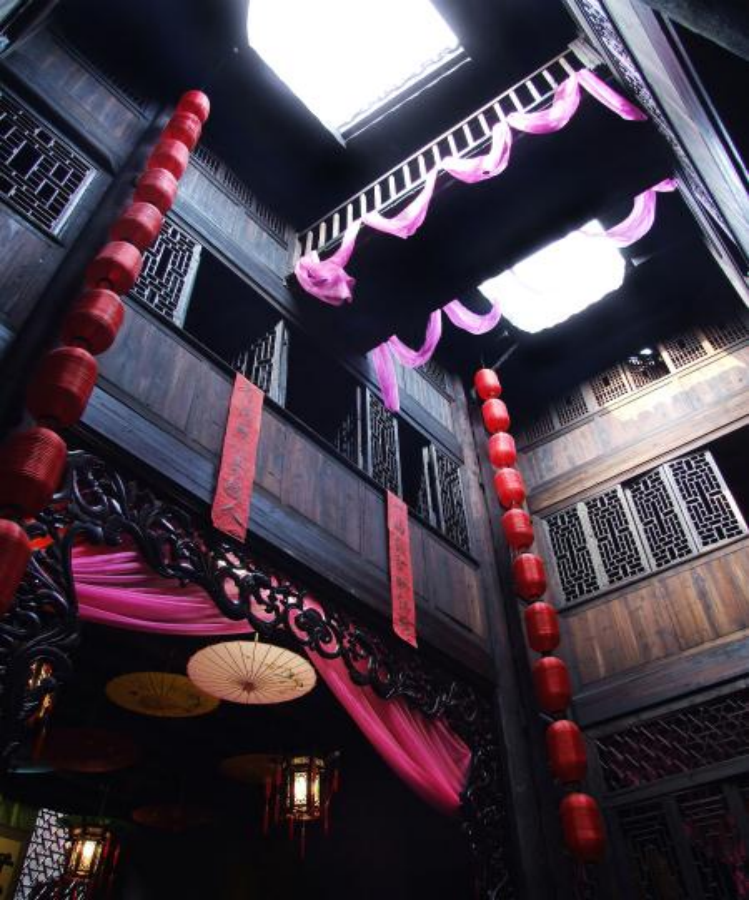
Shaoxing Brothel
Shaoxing Brothel was founded in the late period of the Reign of Emperor Xianfeng of the Qing Dynasty (1860). It was in a wooden house with fire walls surrounding it. It had three floors, each enclosed and separated by wooden walls and corridors. Each room had a hidden door to protect the privacy of the customer. On June 10, 2006, Shaoxing Brothel, together with 17 other ancient buildings of the ancient commercial town, was listed as a key cultural relics site under the state protection by the National Cutural Heritage Administration.
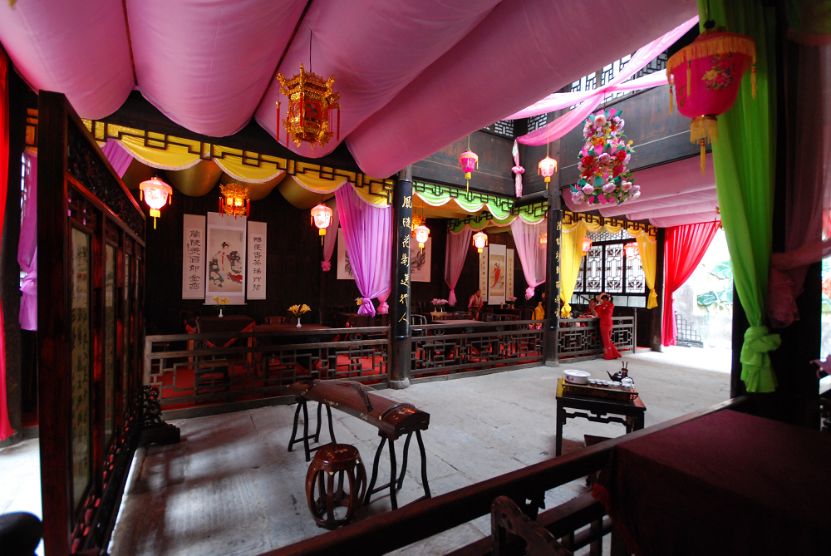

Hefeng Apartment for Prostitutes
Hefeng Apartment for Prostitutes, the side part of Shaoxing Brothel, was a living place exclusively for geisha or prostitutes who were redeemed by some rich merchants. Although they were redeemed, they couldn’t be taken to the buyers’ home because they had worked in brothels according to the customs of Hongjiang. Therefore, the merchants who bought back their freedom would continue to keep them living in the side apartment of brothel and ask the madam to manage them.
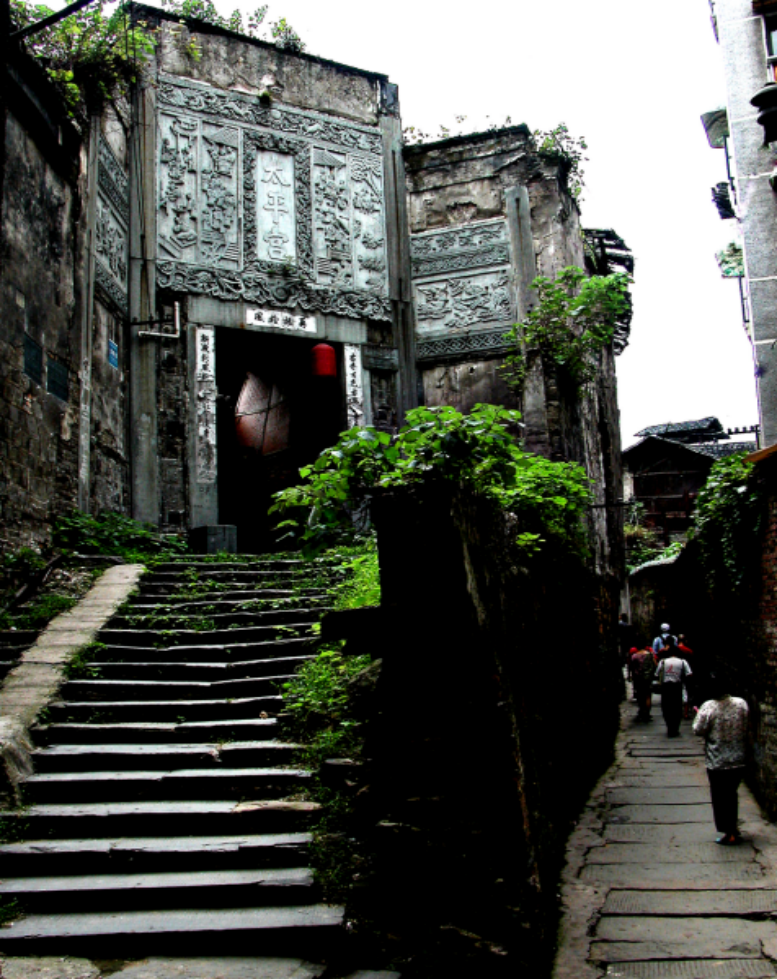
Taiping Palace
The Taiping Palace was a guild hall built by the merchants from Baoqing County, who mainly engaged in handcraft industry, so any handicraft men who came to Hongjiang for business must come here to pay their tribute. The construction of the Taiping Palace was completed by some skilled craftsmen from all over the country over a period of 12 years. The gateways were exquisitely carved and aesthetically pleasing, and the patterns carved on them showcase the loyalty, patriotism, and reverence for martial arts of the people of Baoqing. There is a main hall, a side hall, and a grand stage inside the guild hall.
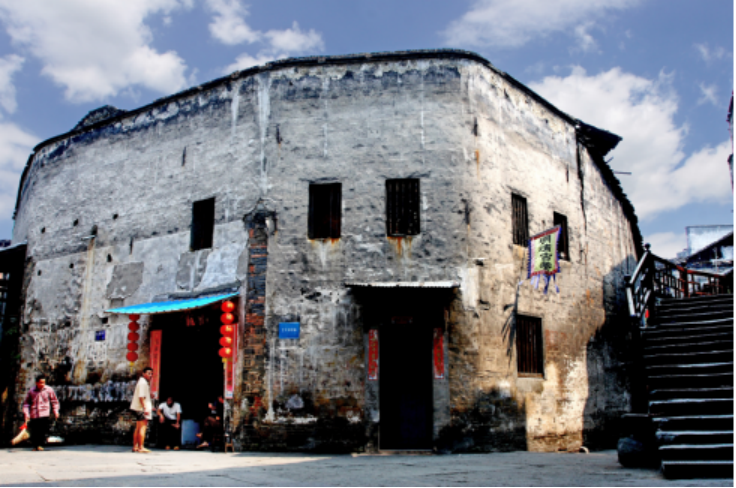
Former Residence of General Wang Tianpei
The above picture is the former residence of Wang Tianpei, a native of Tianzhu county, Guizhou province. Wang was a famous general during the Northern Expedition in China (1926-1927). Wang Tianpei’s troops were highly disciplined, brave and skilled in battle, collectively known as the “Iron Army” along with Ye Ting’s independent regiment. Wang was on par with General Su Yu from Hunan. In 1921, Wang was summoned by Mr. Sun Yat-sen in Guilin and joined the Kuomintang of China. In 1926, under the influence of the CPC, Wang joined the Guangzhou National Revolutionary Army as the Left Wing Commander in chief and the commander of the 10th Army. Due to his tendency towards revolution and disobedience to Chiang Kai shek's command, he was killed by the reactionary Kuomintang in Hangzhou at the age of 39.
(Translated by Chen Min)
